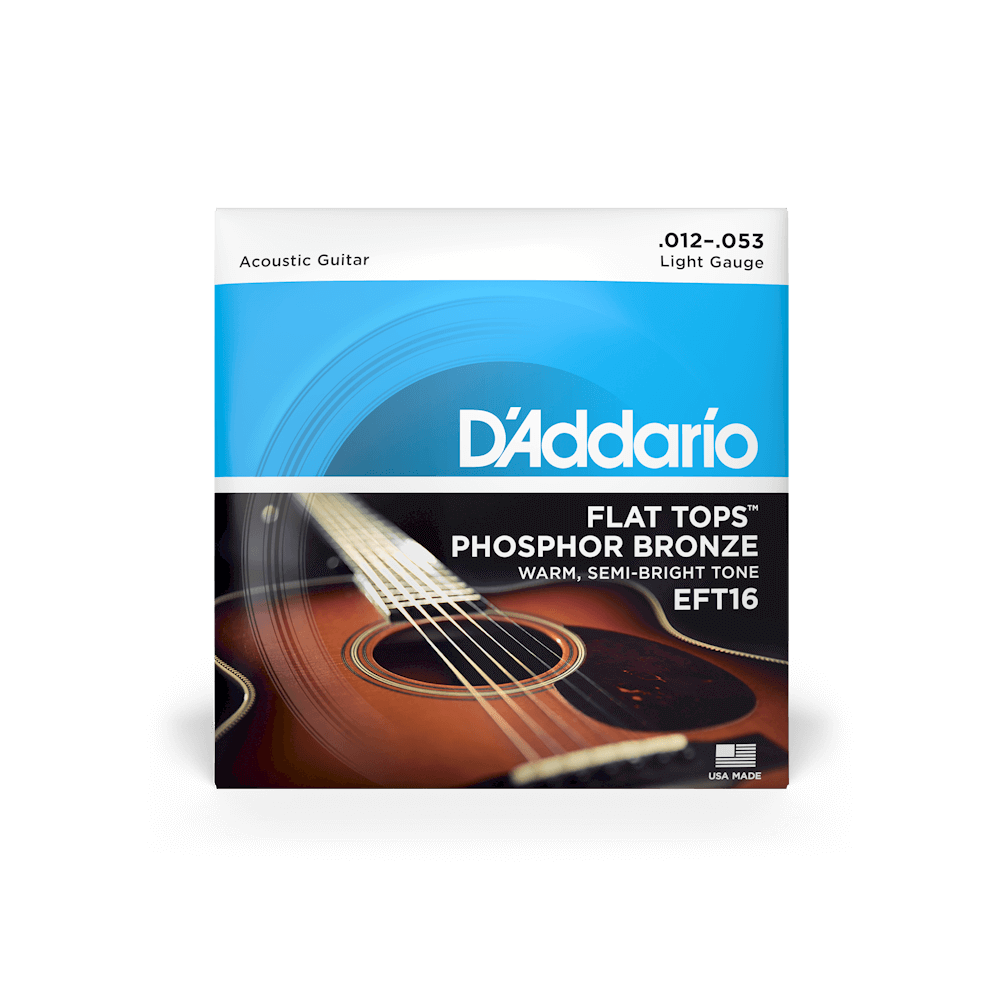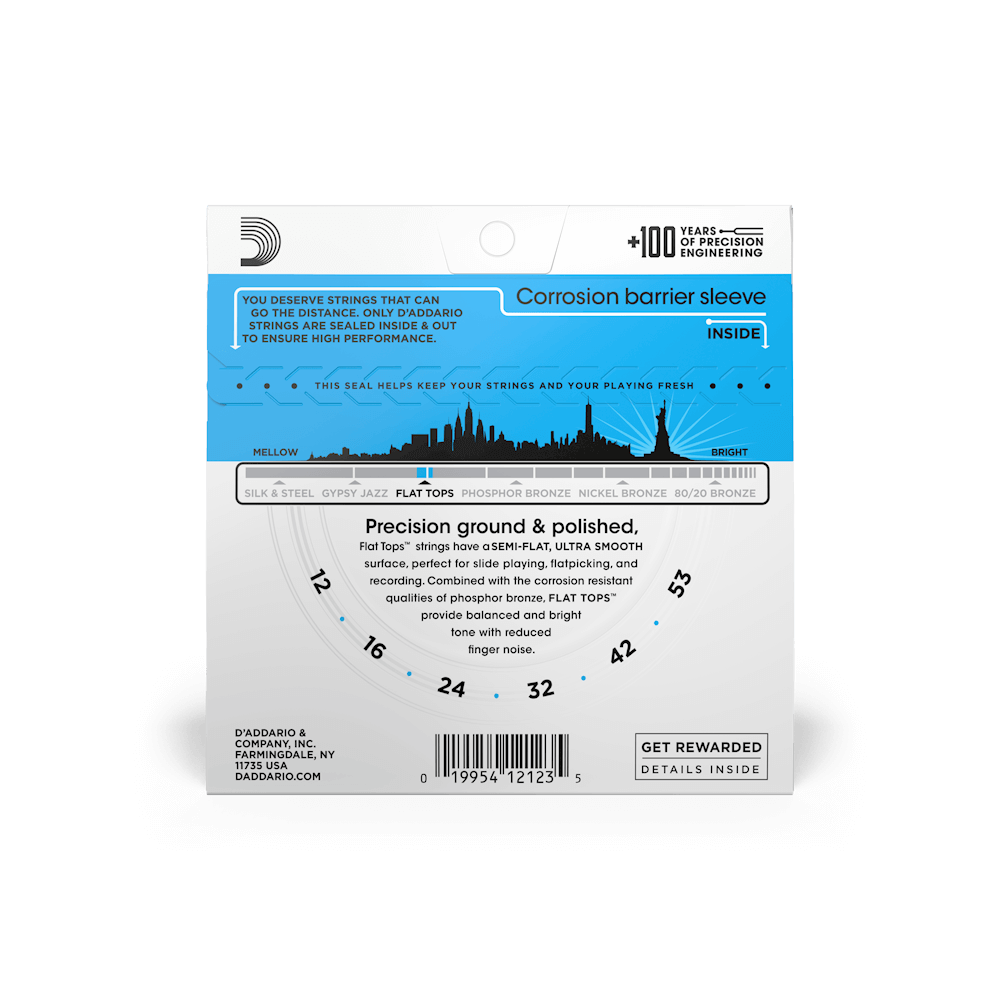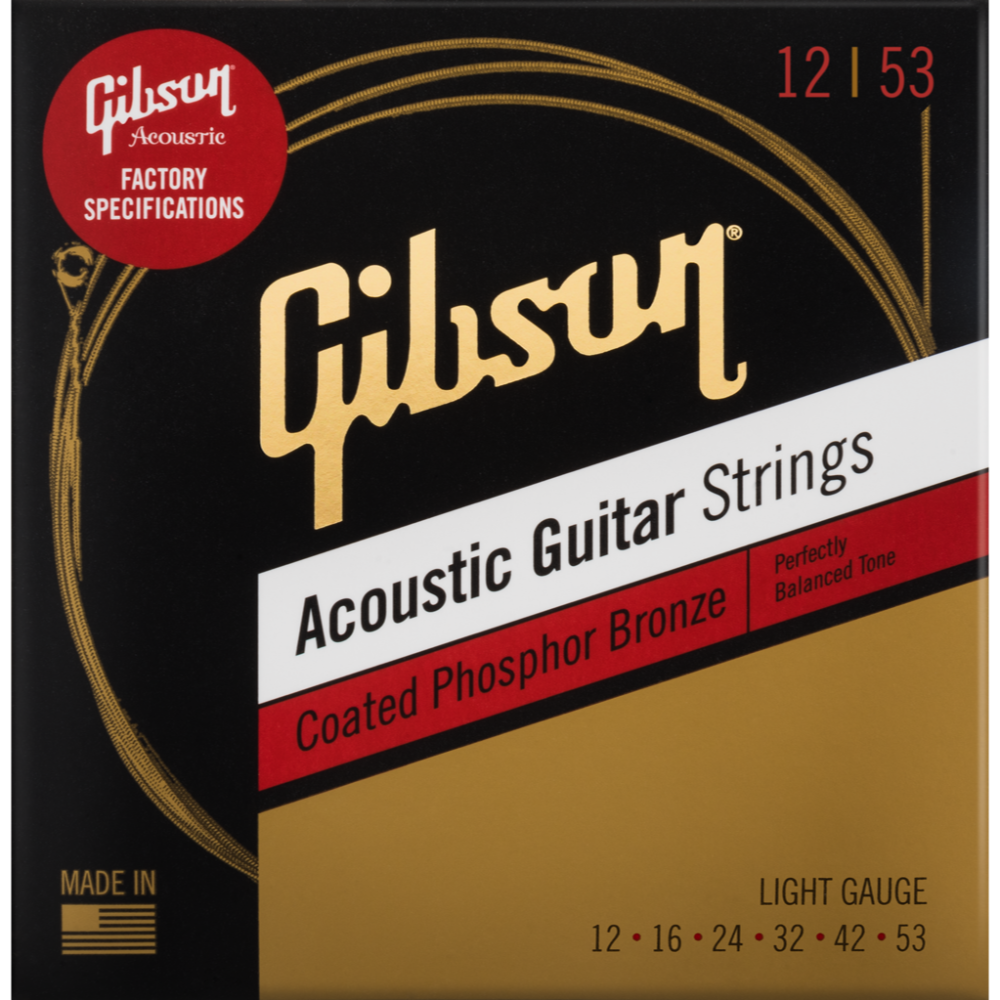-
Posts
1,152 -
Joined
-
Days Won
3
Posts posted by Leonard McCoy
-
-
Without pictures to inspect the damage, it is pointless to say or advise anything.
-
Cheers, Jinder, for taking the time! I'll give the flat-tops a try first, since I have always asked myself how Cat achieved that kind of thumpy tone in his 1971 BBC concert (it's not only the guitar), and work my way up from there.
You should give the OPTIMA another shot. They sound very good, yes they are very pricey, but they also look the part on stage and camera (all-golden strings!).
-
So I've got this song in Open E tuning with lots of fast sliding up and down the neck and odd time signatures:
Does anyone have experience with flatwound strings to reduce finger noise? How effective are they in that regard? How do they play (stiffness and feel), and what do they sound like, compared to, say, high-end roundwounds like OPTIMA Gold Stirngs 1747L?
Here are some pictures of the (semi)flatwounds in question:


-
A new guitar tab:
An exceptional song, not least for its deep lyrics, and one that was always meant to be played together with “Fill My Eyes.” It is just Cat on two guitars here and vocals. Credits go to DJ Illingworth of Majicat.com fame for first trying to really transcribe this song for guitar (as he did for so many other Cat Stevens song). It is an especially difficult song due, in part, to the “timeless” time signature changing freeform in the first half. We tried to capture the song in 4/4 and 3/4 time having to alternate constantly. Not even the verse lines are played like for like. That the song is not some random improvisation either becomes clear when we consider that a second guitar (with partly more intricate fingerpicking) was added later, and that Cat played the song in live performances much like on the original recording.
-
Thanks for getting back to us. We are glad you sorted it out with the dealer. The guitar did look stellar, though, especially the flametop and sunburst.
-
A new guitar tab for a happy new year:
Cat bought a small hymn book called Hymns Ancient and Modern in Foyles and, having penciled its guitar chords in, had taken an interest in hymn no. 42 due to it being non-denominational and which he had never heard of before. He worked out the piano bits together with Rick Wakeman for an hour or two in the afternoon. Acoustic guitar and piano were laid down as basic track before everything else, and the whole piece was mixed and finished by nine that night. Wakeman was left off the album credits at the time out of contractual concerns with Wakeman’s record label, which was later rectified.
-
It would probably have been better to start off your post that the guitar at hand is not a Gibson.
Anyway, despite the look of things, this is not an easy repair job. Out of curiosity, is the bridge screwed down by any chance (metal screws)? The more open crack that can't be closed anymore even with force (which never holds wood in place for long) probably needs a spline and some cleating.
I'll leave you with a video where a similar, though for a more egregious case, repair is being done:
-
This looks to be a cosmetic issue. It is not uncommon for mahogany to have weak spots in the wood, that is, effectively grain lines running perpendicular to the main grain. Yours is a one-piece neck with such an issue. Due to Mother Nature, the main grain direction of your neck is also not perfectly aligned with the headstock direction, which is also not uncommon. I wouldn't expect any structural issues in the long term, but if it really bothers you, you might want to return the guitar.
-
On 12/22/2021 at 5:03 AM, Sevendaymelee said:
Has anyone else experienced this? I've been thinking that it's probably down to the scale length, but I'm not sure. What do you guys think?
While other factors come into play as well for the things you have observed, there is a definitely a correlation between string slinkiness and scale length. The longer the scale the stiffer the strings.
-
39 minutes ago, Katorz said:
12-53?
Yep.
-
New guitar tab:
The Day They Make Me Tsar (Demo)
In a recent interview from 2021 Cat said he simply loves songs like “Tsar.” The Russian lilt that is sung and played on guitar throughout makes this song so unique sounding apart from the fleshed-out riff sequences. As the lyrics show, “Tsar” is about Alexi the last Tsar, child of Nicholas. It was written around 1969 alongside other gems like “Father and Son” for a proposed musical about the Romanovs entitled “Revolussia” that never came to be. It was then, two years later, intended as a studio demo for the album Teaser and the Firecat but eventually ended up on the cutting there as well, probably due to its short length. The song never received a proper recording and, mixed only decades later, is still only available on select compilations like In Search of the Centre of the Universe and the Teaser and the Firecat Super Deluxe album.
-
New guitar tab:
I’ve Got a Thing About Seeing My Grandson Grow Old
The song was written during Cat’s transitional phase from big band arrangements to a softer, more reflective type that came closer in sound to his own demos. Ultimately the song ended up on the cutting floor for Mona Bone Jakon (1969), and remained in the archives of Olympic Studios, London for almost thirty years until in the early 2000s, when it got released as various mixes on two different compilation albums without ever being recorded properly. It features Cat’s prominent guitar licks as well as his own spiel on power chords. In the chorus Cat does a rare Buddy Holly impression growling “Grow old, oh, oh.” The song eventually received a major reimagining and got released as “Grandsons” on Yusuf’s album The Laughing Apple (2017). The version transcribed here is the compilation release. We discarded the capoed-up version initially posted here, because with the hammer-ons it could not have been played that way, and cleaned up the tab as a whole.
-
On 10/19/2021 at 7:21 PM, Leonard McCoy said:
And I weeped.
The thing is that guitar repair and restoration work has come a long way since its humble beginnings. Nowadays there is information available on how to repair guitars of a certain vintage.
-
New guitar tab:
“Pop Star” is not only a reflection on Cat’s prior fame and status but it also serves as a sign-post for the next guy in line trying to get into the music business for all the wrong reasons (“to have bread and fame and get chicks”). Alun provided the baseline riff on which the E7 and A7 spiel is based on. The bits of the intro where Alun drifts off into freeforming for a great many bars, with the manic bits charging in, proved too challenging for our transcription skills (any help is appreciated). Just playing the song for a bit gives you good feel for it, though.
-
I don't think weight is much of a consideration with acoustic guitars. Even those built like tanks are still fairly lightweight compared to any electric.
-
New guitar tab:
Together with “Father and Son” and the “The Day They Make Me Tsar,” this song belongs to a handful of musical pieces Cat had written for a proposed musical about the Romanovs called “Revolussia,” a project which ultimately never came to be. Cat plays a terrific piano on the record, and in almost all live performances he chose to play the piano part instead of guitar. But there is also rare video footage of him playing this song on guitar, such as the 1970 Belgian Jazz Bilzen pop festival or his performance on French TV that same year. On the studio demo Cat solely plays guitar, so it stands to reason that the song originated there first and that the fleshed-out piano part came later. The most exciting stuff happens on piano, though, so we decided to adapt some of the piano magic from his live 1971 BBC performance (see video down below) to guitar, while adhering as much as possible to the studio demo for solo guitar and voice.
-
Definitely not a crack...

-
Cherry sunburst finishes from that time period do have a tendency to fade to a brownish color—not quite the same as your golden B25 there, but who knows what environment the guitar was subjected to (smoky bars turning cherry sunbursts into dark bursts, etc). I would check the guitar thoroughly over for any overspray or a refinish job.
-
It looks like a natural line or ridge within the mother of pearl rather than a crack. Natural mother-of-pearl inlay material isn't always all regular and uniform.
-
I occassionally play in Open E tuning.
A solidly constructed, modern guitar will easily withstand the forces of an Open E tuning, even if it is tuned like that for long stretches of time. The added tension is not that much higher compared to standard tuning. Less fortunate guitars should probably tune to open D and use a capo at the second fret for playing just to err on the side of safety. Vintage and antique guitars should probably let it be, as they are often tuned to an even lighter tuning than standard and with super light strings to top it off.
I would not terribly recommend medium strings for Open E tuning even with modern guitars, since the added tension of medium-gauge strings is nothing to scoff at and makes barré-fretting, which Open E requires in spades, a lot harder.
I noticed that by switching from one to the other tuning that you might want to re-adjust your truss rod to fine-tune the neck to be as straight as you can possibly make it without buzzing for easier playing.
-
6 hours ago, fortyearspickn said:
Bones, This is awe-inspiring! You are to be commended. Thanks.
That is really too kind. The website is little more than a detailed sign-post for myself (because one tends to forget the very intricasies of a song after a certain period of not playing it) and that one lost soul out there looking for that kind of stuff (today might have been you).
-
New guitar tab:
A reflection of Cat’s spiritual, self-seeking journey at the time and especially after his convalescence from tuberculosis and thematically in a similar vein as “On the Road to Find Out.” Cat plays a stellar piano part here, with intricate riffs and a Floyd Cramer-like solo in Chorus 2. For the guitar part itself is purposefully very basic even in live performances, where Alun reaches for the 12-string guitar to play the guitar part, we opted to adapt the piano part and chords to the guitar wherever such an arrangement was feasible.
-
 1
1
-
-
On 11/24/2021 at 8:28 PM, Jay-45 said:
This is my first experience with a short scale guitar. I am wondering which frets are most impacted with shortened widths. It seems that I am have to tighten up my shapes of open chords in the first three frets. Can you enlighten me on what the benefits and drawbacks are with the 24.75" scale vs the normal 25.5" scale that I was used to on other dreadnaughts.
With short-scale guitars in terms of playability, I don't find a difference in fretting (that's more of a setup issue) but rather a comfortable snappiness of the strings, particularly the bass strings, which seem tighter or not as "loose" (if you can call it that).
-
On 11/24/2021 at 7:10 PM, Jay-45 said:
I recently purchased a 2021 J-45 Standard from an Authorized Gibson Dealer in another state.. They told me that the J-45 that I purchased came expertly setup from the factory. I found it a little hard to play and replaced the original strings with Elixer PB Extra-Lights. The sound with the Extra-lights was horrible. So, I put on some D'Addario PB EXP16 Lights, and now the sound is back to better. So, I have a few questions.
1. What are the best strings to put on to try to achieve the same type of sound that Neil Young gets from his Martin D28. That is the type of music that I play.
2. What additional setup can be done to my J-45 to achieve better play-ability for my short fat finders?
I read elsewhere that lowering the action, or changing the saddle can really impact the tone, negatively. So, I would really appreciate any advice or tips to help get my setup right, for me.
I am in Orange County, California and do not know any Gibson Luthiers.
The factory can only set the instrument up so much until it gets shipped to wildly other places. In that sense, it will never be expertly set up when it gets to your region. Temperatures and humidity values vary simply too much in other places for the factory to home in on a razor-sharp setup without leeway to account for that.
Get the guitar to a competent luthier or guitar technician in your region for a professional setup to make it easily playable. The action will probably have to come down on the saddle as well as the nut, and the neck straightened, all of which doesn't impact sound but playability.
For strings, and the Neil Young acoustic sound, I would suggest nothing lighter than .012 gauge strings, preferrably exactly these.



Flatwound strings better for recording than roundwounds?
in Gibson Acoustic
Posted
Wow, great! Thanks for the note on bending also with those strings.